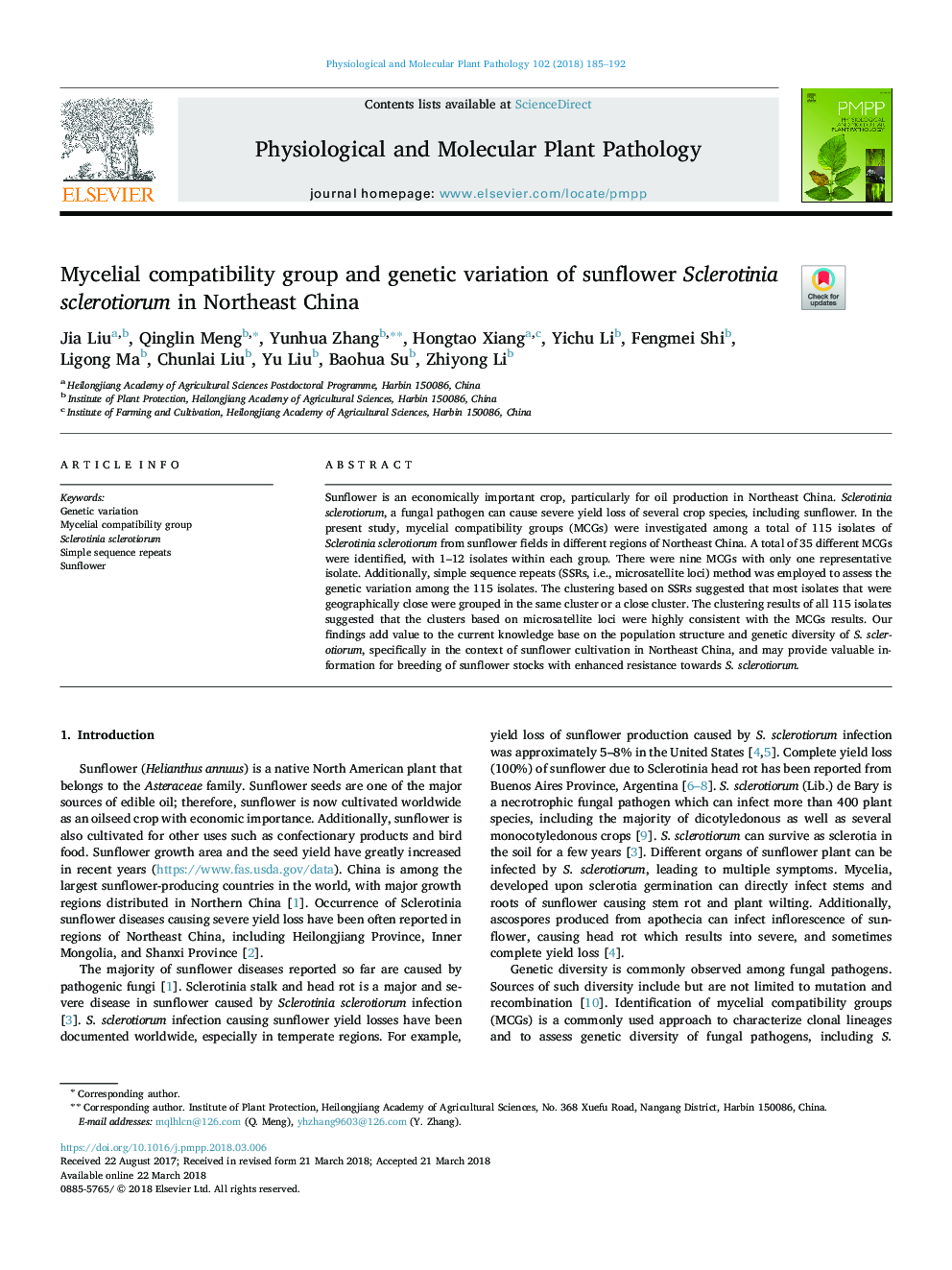| Article ID | Journal | Published Year | Pages | File Type |
|---|---|---|---|---|
| 8649247 | Physiological and Molecular Plant Pathology | 2018 | 8 Pages |
Abstract
Sunflower is an economically important crop, particularly for oil production in Northeast China. Sclerotinia sclerotiorum, a fungal pathogen can cause severe yield loss of several crop species, including sunflower. In the present study, mycelial compatibility groups (MCGs) were investigated among a total of 115 isolates of Sclerotinia sclerotiorum from sunflower fields in different regions of Northeast China. A total of 35 different MCGs were identified, with 1-12 isolates within each group. There were nine MCGs with only one representative isolate. Additionally, simple sequence repeats (SSRs, i.e., microsatellite loci) method was employed to assess the genetic variation among the 115 isolates. The clustering based on SSRs suggested that most isolates that were geographically close were grouped in the same cluster or a close cluster. The clustering results of all 115 isolates suggested that the clusters based on microsatellite loci were highly consistent with the MCGs results. Our findings add value to the current knowledge base on the population structure and genetic diversity of S. sclerotiorum, specifically in the context of sunflower cultivation in Northeast China, and may provide valuable information for breeding of sunflower stocks with enhanced resistance towards S. sclerotiorum.
Related Topics
Life Sciences
Agricultural and Biological Sciences
Plant Science
Authors
Jia Liu, Qinglin Meng, Yunhua Zhang, Hongtao Xiang, Yichu Li, Fengmei Shi, Ligong Ma, Chunlai Liu, Yu Liu, Baohua Su, Zhiyong Li,
